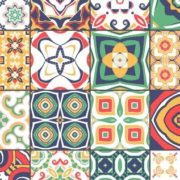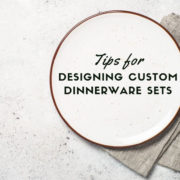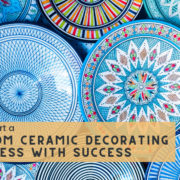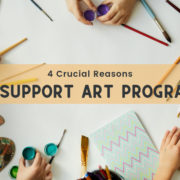Conversations with unhappy customers are never pleasant. It reminds me of all the scolding’s I got as a kid. The silver lining now is that I no longer have to worry about my father taking his belt off, and I also know that unhappy customers make us better. I suppose that was the purpose of the size 36 piece of leather my father wielded with such skill. But I never understood that at the time. I’m happy to say that even with hundreds of customers out there, conversations like I recently had are extraordinarily rare. But this one motivated me to a write Part 2 on this subject. I also hope it makes us better.
In the case of this recent conversation, I learned that there is confusion around how problems with ceramic printing get resolved. But, before we launch into this please go to the blog page on our website and read two blogs. The first was sent in January of 2013 titled “Crisis Management. It Happens to Everyone” and the second, Part 1 on this subject, was sent in April of 2013. In this Part 2 I will try hard to include only advice that adds to or emphasizes points in the other two related blogs.
How do you get help with your ceramic printer? Simple, call us. That is step 1. We are “Tier 1” tech support and we handle essentially 70% of all customer problems (free of charge unless parts are needed). That is because the overwhelming majority of problems relate to color and various other issues that are unique to printing with a very strange chemistry – little jagged colored rocks otherwise known as ceramic pigments. But the support doesn’t end with us. It just starts with us. Your printer, which is a sophisticated piece of electro-mechanical digital equipment, is going to break. All equipment breaks. How you prepare for that is the subject of the two 2013 Blogs mentioned above. Preparing for that inevitable situation means having a plan for it. That plan is vital to your production up-time. So, read the blogs.
Step 2 is to call the Ricoh toll free (and cost free) 800 support line. That number is in the plastic documentation packet that came with your printer, and when we are stumped that is where we will send you. It is where we go when we have equipment problems. The Ricoh 800 line is “Tier 2” tech support. Any significant part failure in the printer will require trained Ricoh service technicians. We know ceramic printing, and after 16 years of using the technology in our own manufacturing, we have learned a few things. But no one at Enduring Images is a trained Ricoh service tech. All of the folks on the toll free line are. There are numerous problems they can solve for you over the phone that we cannot. However, they can’t solve all of them either. When they are stumped or when they know you need to replace a non-user serviceable part, they will dispatch a Ricoh Service Technician. The Ricoh on-site Field Service Organization is “Tier 3” support. When it gets to that point let us know because here is where it can get complicated.
Enduring Images is an authorized Ricoh re-seller. We are authorized to sell Ricoh equipment, and when we sell it the standard Ricoh Warranty (with an exception detailed below) comes with it. We are well known to the folks at very high levels in the Ricoh Sales and Service organizations because we sell a lot of equipment. But, Ricoh will not make nationwide references about their re-sellers because if they do it for one they must do it for all. As a consequence of that, we are not that well known to every single one of the hundreds of field service offices and field service techs located around the country. And, standard Ricoh policy is they will not service any Ricoh device with non-Ricoh parts. The intention is to keep counterfeiters from screwing up their printers with non-Ricoh parts. But unfortunately we get caught in that trap too, even though we are a well respected member of the Ricoh distribution channel.
Here is the official Ricoh policy on servicing Enduring Images ceramic printers:
“The full Ricoh warranty can be found on the Ricoh web site at www.ricoh-usa.com. In summary, Ricoh printers include a standard one year Ricoh warranty including parts and labor. There are 2 exceptions. The Photoconductor Units (PCUs) and the Intermediate Transfer Unit (ITU) are limited to 90 days. For Ricoh printers sold by Enduring Images, the standard Ricoh warranty applies except that there is no warranty at all on the PCUs and ITU. So, within the first year of ownership, Enduring Images customers can expect full warranty repairs on the printer except for any failure of the PCUs and ITU. Those devices will be replaced at the customers expense, or covered by Enduring Images, but there is no Ricoh Warranty of any kind on those components in an Enduring Images ceramic printing system.
After the expiration of the one year warranty period, any Ricoh service office or 3rd party Ricoh Authorized Service Provider can repair Enduring Images printers on a T&M basis (at standard rates). Because they are not modified in any way (except the toner) all standard Ricoh repair procedures are applicable.” Sounds simple. The underlying premise is that any part of the printer that contacts ceramic toner cannot be warranted because the result of that contact has not been studied and is unpredictable.
For reference, the components that contact the toner are: toner cylinders, toner feed system, photoconductor units (PCUs), image transfer unit (ITU), and fuser assembly. The PCUs and the ITU only get a 90 day warranty from Ricoh, so they are essentially exempt from Ricoh’s warranty too. This is because statistically those are the components that break. But there are some techs and field service offices that will simply walk away from making any repairs if they learn ceramic toner and not Ricoh toner is in the device. Again, rare but call us if this happens. You can minimize any delay in repair if you have an authorized 3rd party service provider near you. They don’t care so much about policy but want to provide good service so that you call them next time and not Ricoh. Find one. They can be your best friend at the worst time.
Problems occur when your Ricoh tech has never heard of Enduring Images. If you can avoid discussing ceramic toner then do so, because this will prevent confusion on the part of the service tech. If it never comes up, the service tech will fix the printer like any printer. But if it does come up, and it will if the part is covered in ceramic pigment, you should be prepared to give the tech the statement above. If they have any questions about it have them call us. It is rare that a service tech will care about the toner in the printer unless it is in contact with the component suspected of causing the problem. If the tech deems that the toner is causing the problem, then they can charge for repairs that otherwise would be covered by the one year warranty. After the one year, it no longer matters since all repairs are T&M and why would they care. T&M work is a good gig. So this issue is primarily relevant during the warranty period. Again, call us if it surfaces after the warranty and a tech decides they don’t want to repair a ceramic printer. This is contrary to policy but does happen, and it can take several weeks to resolve the misunderstanding.
We generally cover all of this during training, but it looks like we have missed it for a number of customers. We’ll do better in the future and will make sure it is part of training videos. I hope this blog helps everyone else.
In summary, read Crisis Management and Part 1 of this series on our website blog page. When you have a problem call us first. We are Tier 1 support. If the usual solutions don’t work, we will advise you to call the Ricoh tech support line. They are Tier 2 support. If they can’t fix it they will dispatch a Ricoh tech. The field service organization is Tier 3 support. Remember that you have more options than Ricoh. There is a large network of Ricoh trained and authorized 3rd party service providers. Find them. Bottom line – all equipment breaks. Have a plan for when yours does.







